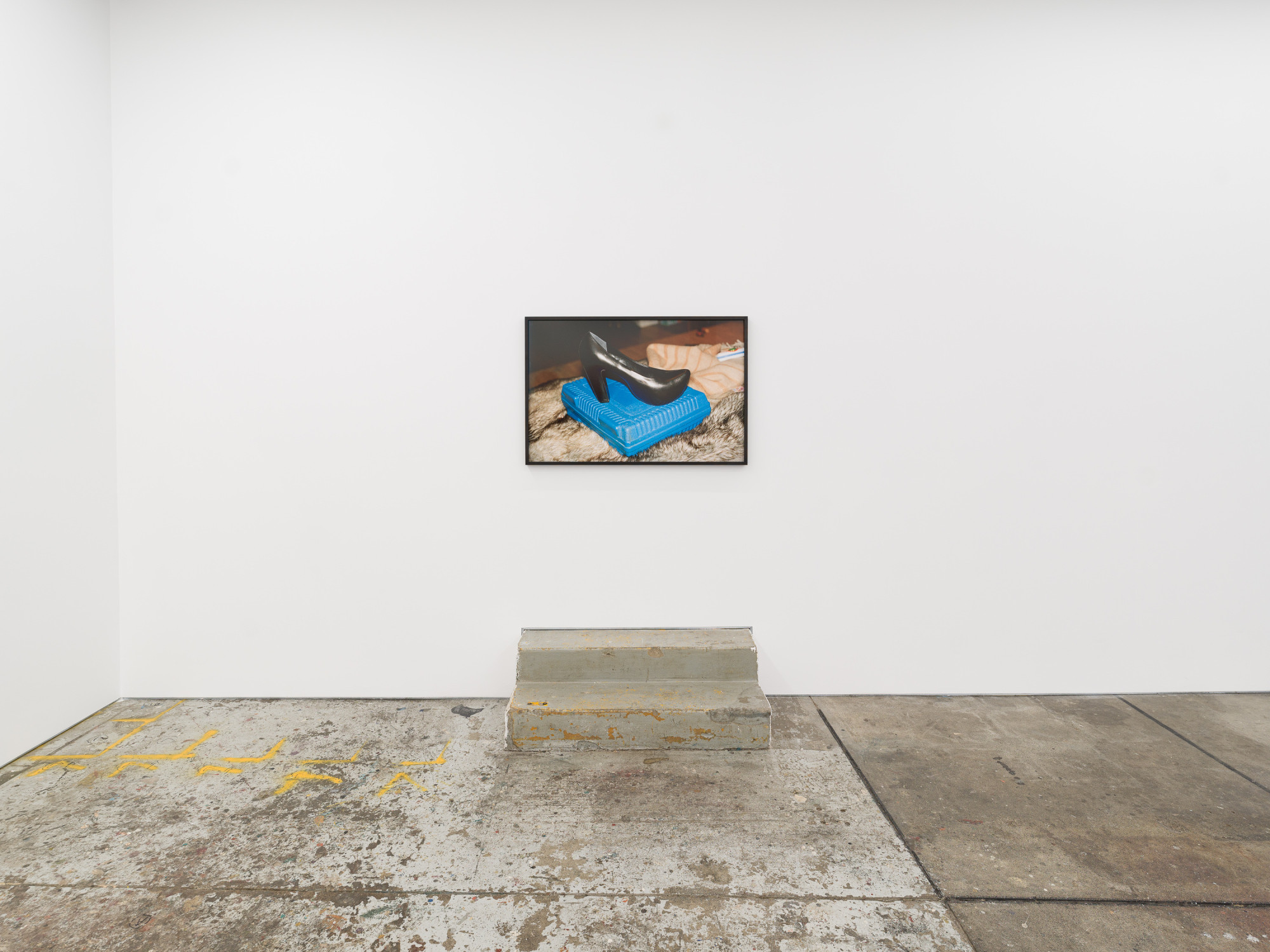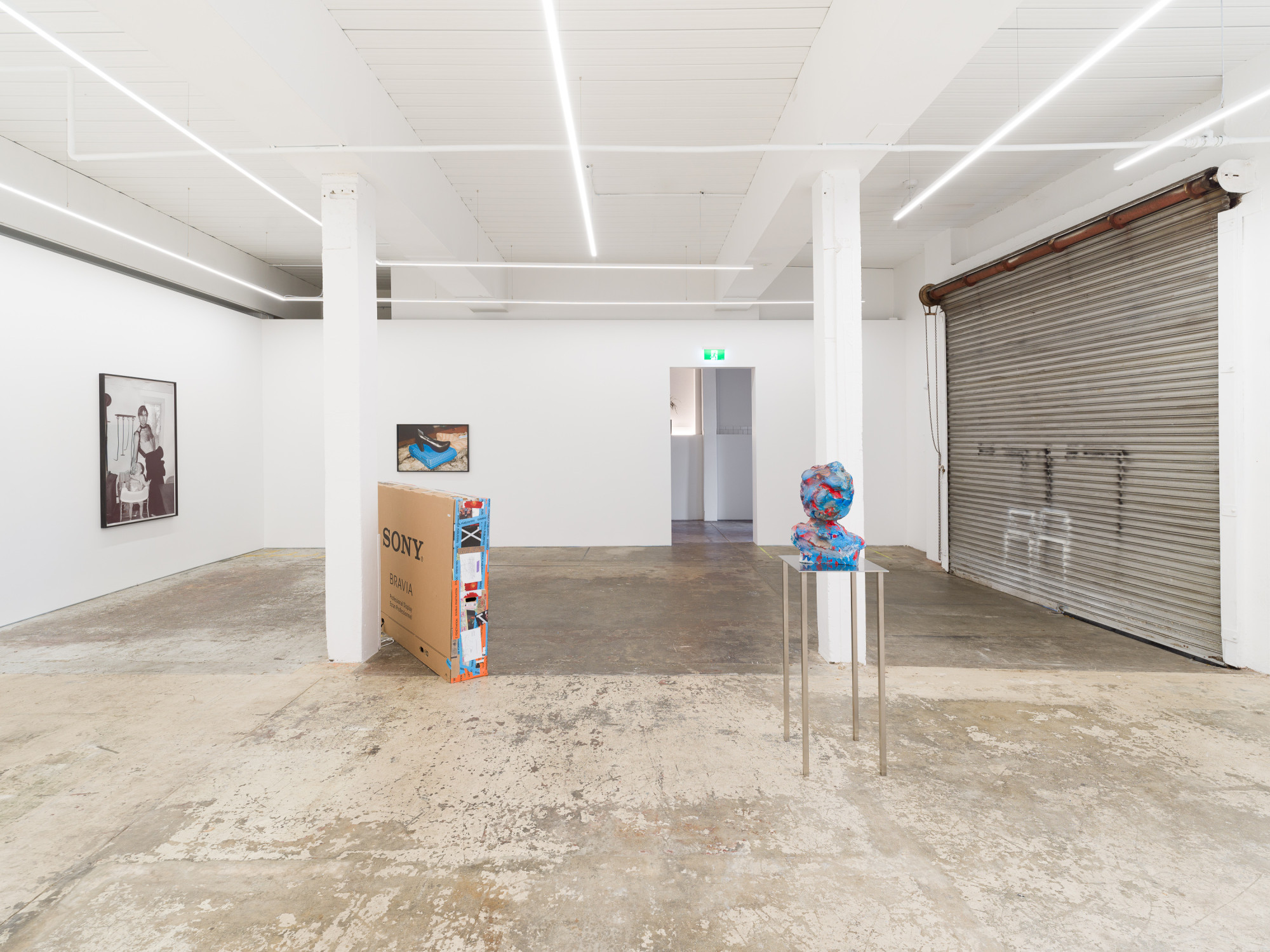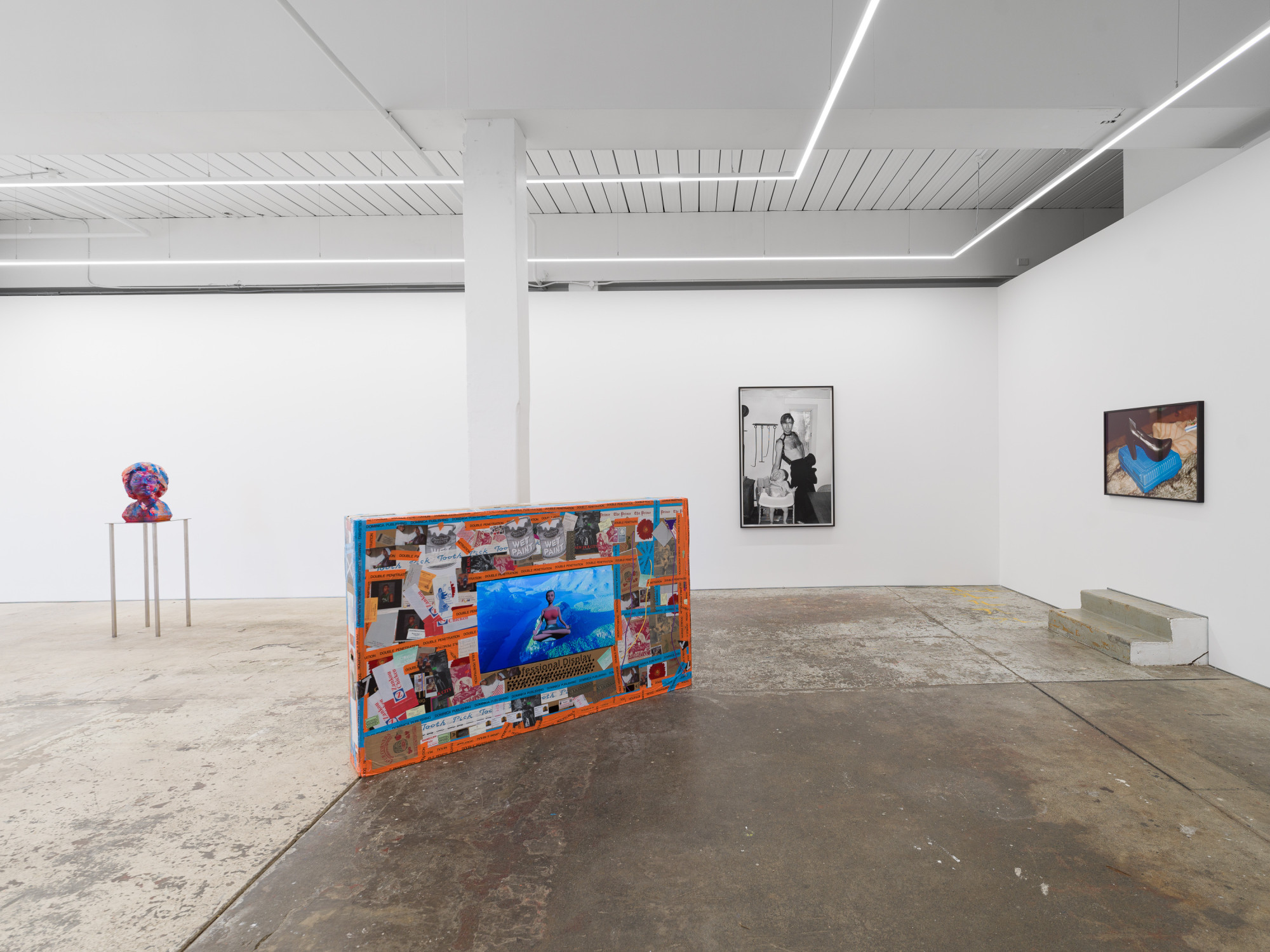
Through the works of four artists, Breakdown considers the vulnerabilities, transformations, and complexities that emerge from moments of disintegration and reconstruction.
Alexandra Bircken trained as a fashion designer at Central St Martins College of Art and Design in London, which is apparent in her appreciation of the tactile qualities of materials. This experience underpins not only her interest in the use of textile materials, discarded items of clothing and techniques of weaving, knitting and crochet, but also her interest in the human form and her preoccupation with dressing the space.
In 2 Circles (2020) Alexandra Bircken dislocated the frame of a pushbike from its wheels, handlebars and machinery. Distended and abstracted, it becomes a sort of hieroglyphic wall drawing. Unhinged, it begins to look almost skeletal, brachial, spatchcocked. Bircken interrupts movement, turning function to dysfunction.
In Mindmap (2020) Bircken plays with the material of our protective forms, either exaggerating our desire for solidity and stability to the point where an object becomes unusable – like a pair of hockey gloves cast in bronze – or betraying its fundamental fragility, like a helmet stitched loosely of thread. With fibrous veins and arteries, it becomes almost unrecognisable as a helmet, revealing the cranial form it is supposed to protect.
In Talia Chetrit’s portraits of domestic life, the cast of characters includes herself, her boyfriend, their child, cat, and a selection of props that intermingle with the quotidian routines of child rearing and the home. In Untitled, (Family #1), 2021, her boyfriend, dressed in women’s designer clothes, feeds their child without breaking his piercing gaze. Despite the pretense of self-exposure in these and so many of Chetrit’s images, few of her works disclose much about the actual structure of her life, the nature of her habits, or her internal sense of self.
The power of Chetrit’s latest images hinges on an odd ambivalence between their banal settings and the presentations adopted by the adults within them. The characters’ gender contrivances and charms shift circumstance to circumstance and image to image, adding intrigue to the trappings of a middle-class life that serve as background. The posed postures and direct stares assumed by Chetrit and her boyfriend are less clues to their inner natures and more regular reminders of the camera’s presence, as well as the person behind it. These images revel in the fact that they are constructions, and as such they beg the question: who’s calling the shots in this drama? We imagine conversations about clothing, props, choreography, lighting, and setting, and the dialogue about what is presentable when first looking at the film. These works present a new set of negotiations between photographer, camera, and subject.
Meditation (2021) is from Martine Syms’ Cita’s World series. Kita enacts the performances of everyday life in a hyper-digitized world. The character’s roles range from meditation guru to cultural commentator, and she speaks directly to questions of consciousness within the systems of labor, race, technology, and institutional failure. To the cognitive dissonance of Siri mishearing her speech, to the terror of (mis)representation, to the instinct to reconnect with nature. In these video works, Syms creates an environment in which being human is inextricably linked to the impact and interruptions of technological innovation.
“The work-cum-meditation guide features a familiar backdrop of soothing natural vignettes, such as aerial views of mountains. But its ordinariness is offset by the digital character Kita. Based on the figure from the Black Entertainment Television (BET) series Cita’s World, Kita asks us to “stay here and just observe.” As the work goes on, the digital meditation guide – hackneyed in our overwired and operationalized lives – perverts into a charged question of presence. What could be more jarring than a virtual character demanding that we imagine ourselves as a three-dimensional object? How, indeed, are we present?” – Adela Kim, “Are We Ded?”, Text zer Kunst
Kaari Upson’s bust sculptures stand as reminders of how slippage and mirroring prevail in the brand of matriarchy that defines the artist’s world. Upson attempted to sculpt her mother’s face from memory and extended the series through several generations of familial women. Each is cast, enlarged, and thickly painted by Upson to reflect the face of her mother, grandmother, or self, or that of her friend, friend’s mother, or grandmother — their faces are then pressed into each other so that the paint smudges and melds, presenting ambiguous, unreliable portraits, each a multiplication of the “her” that weaves through the artist’s practice at large.
Upson’s work considers the overlaps, fissures and disjunctions between our interior worlds and exterior reality, not just conceptually, but also through her embodied process of casting, “skinning” and inverting objects. Embracing quasi-archaeological, forensic strategies, the artist created uncanny, layered scenarios with the power to surface repressed desires and memories — both personal and collective — with unexpected force. Her work evokes radically destabilized subjects and presents a critical portrait of late-capitalist American culture with its many fetishes, obsessions, neuroses and repressed fantasies.
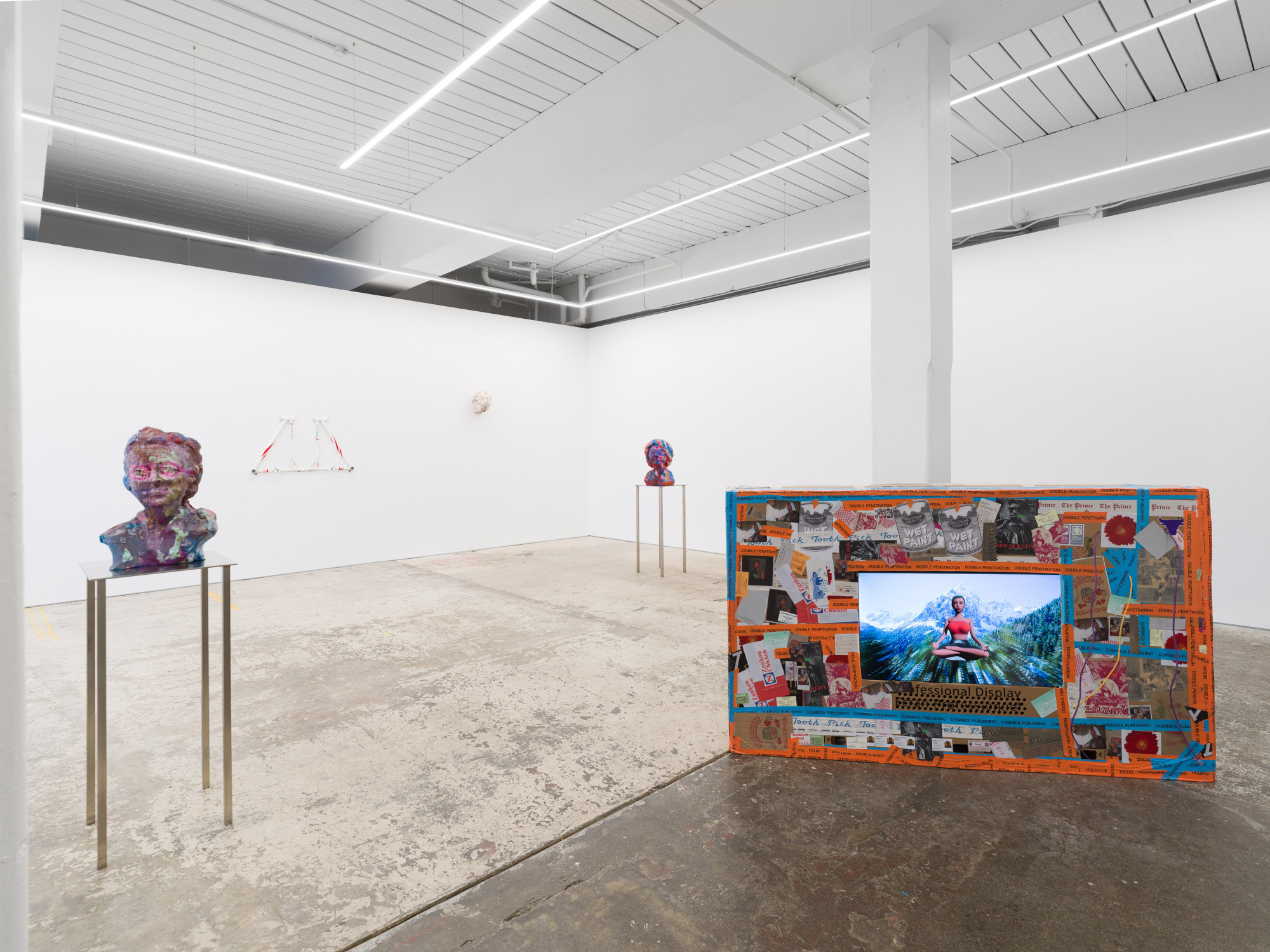
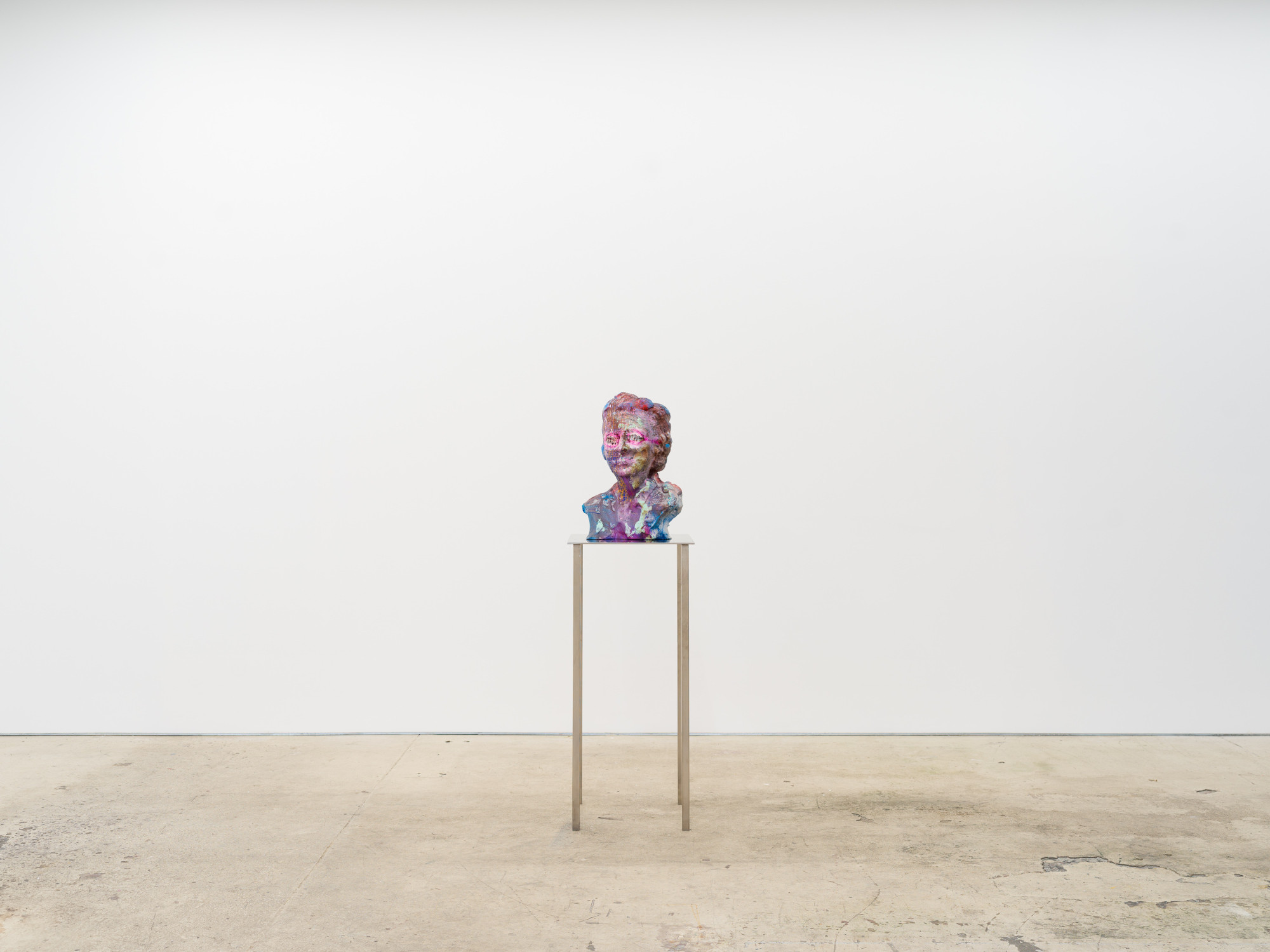
Oma (Blind)
2020
Medium-density fibreboard, acrylic and oil paint
53.3 x 30.5 x 38.7 cm
Installation view, PALAS, Sydney, 2024
Photo: Josh Raymond
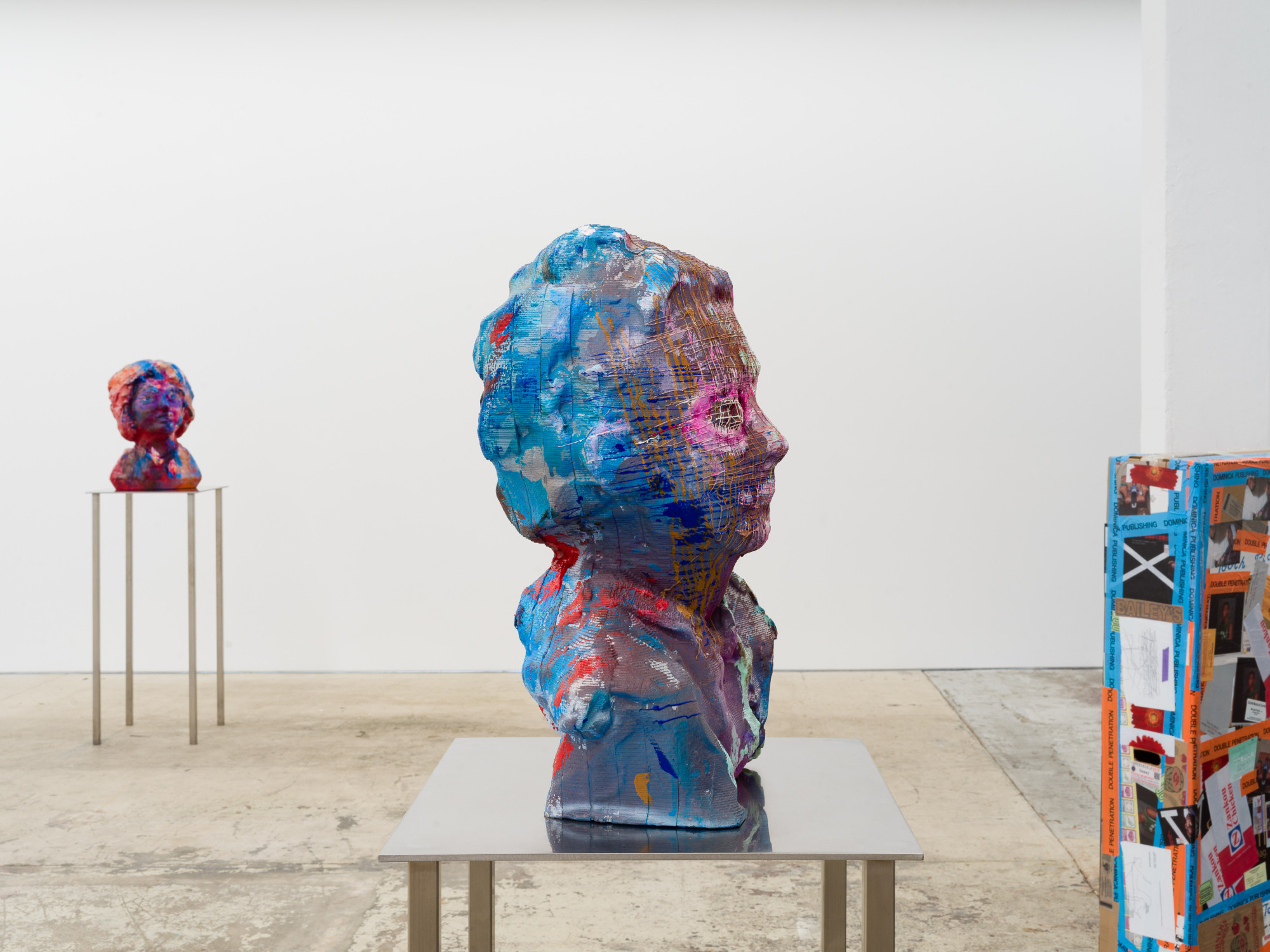
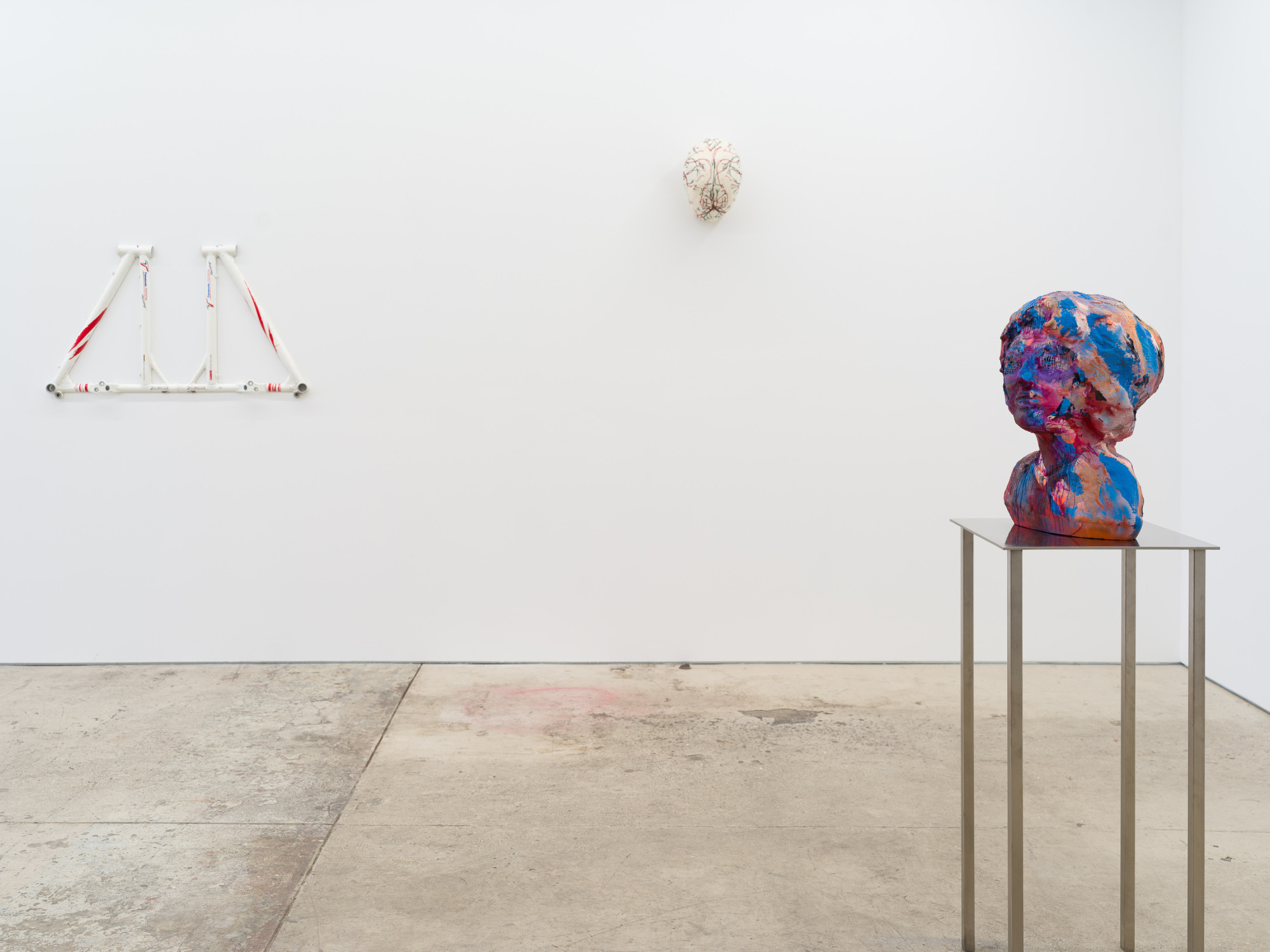
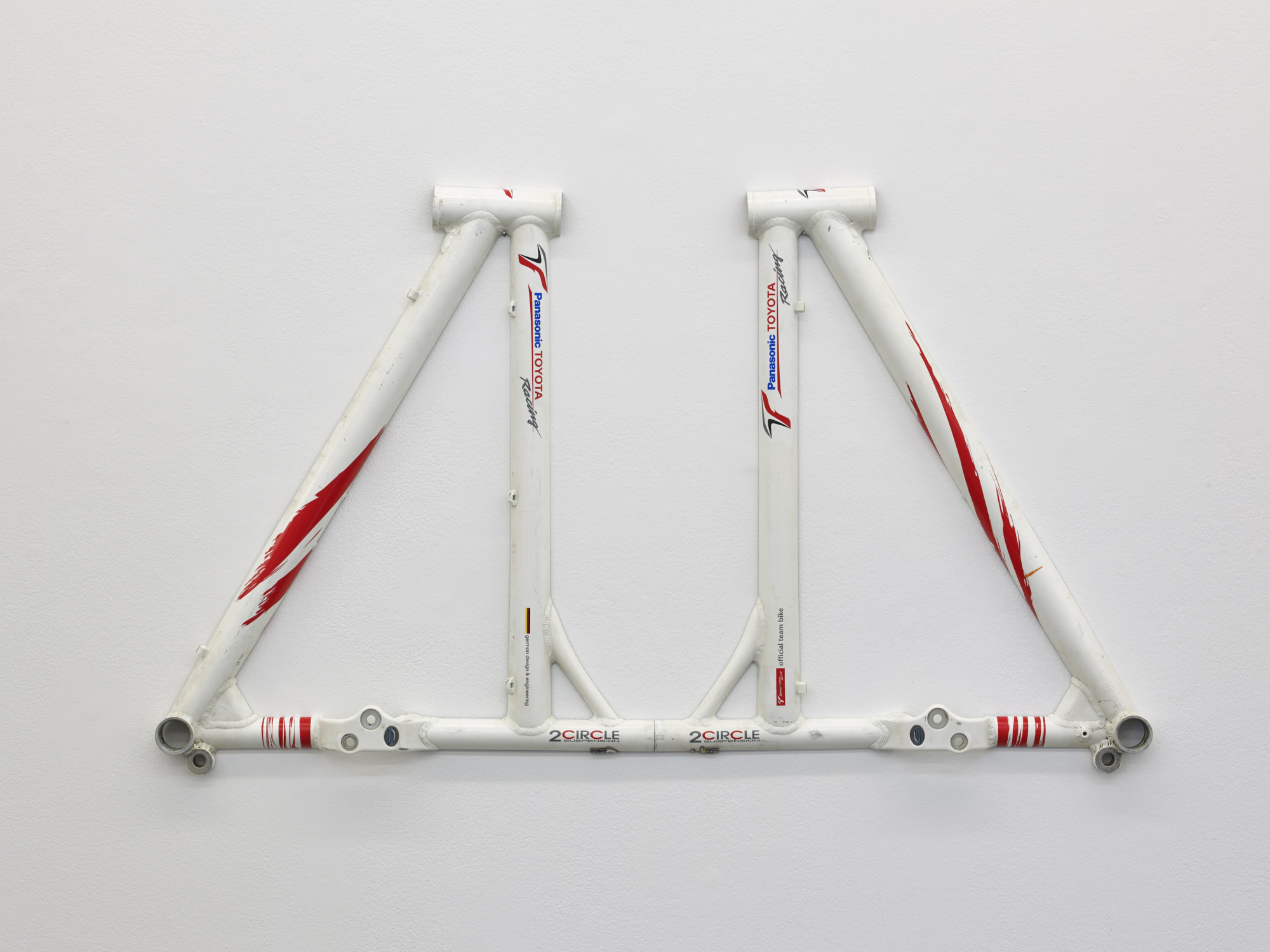
2 Circles
2020
Aluminium and varnish
67 x 113 x 4.5 cm / 26.4 x 44.5 x 1.8 in
Courtesy of Herald St, London
Photo: Andy Keate
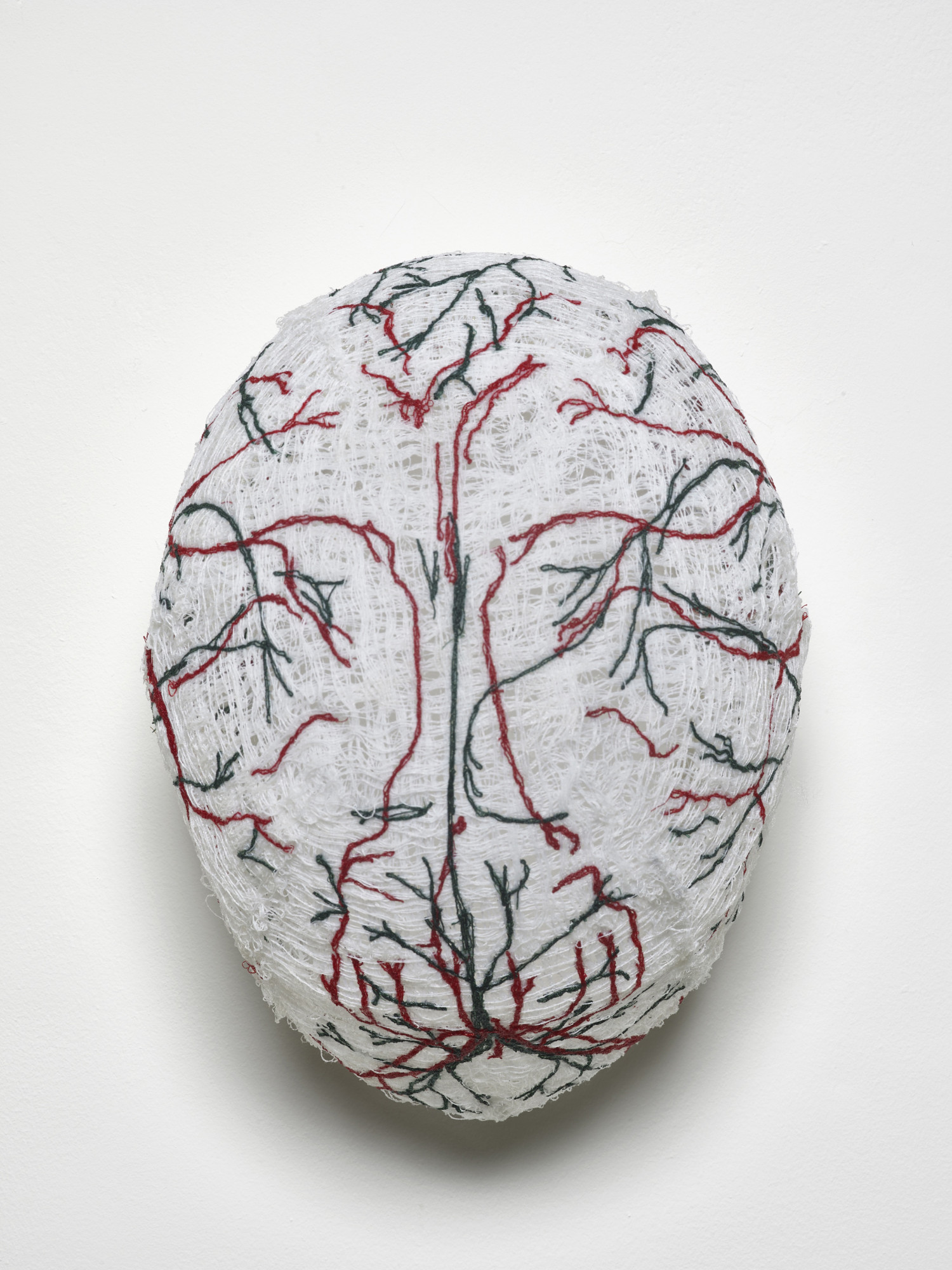
Mindmap
2020
Polyester thread and epoxy
35 x 23 x 26 cm / 13.8 x 9.1 x 10.2 in
Courtesy of Herald St, London
Photo: Andy Keate
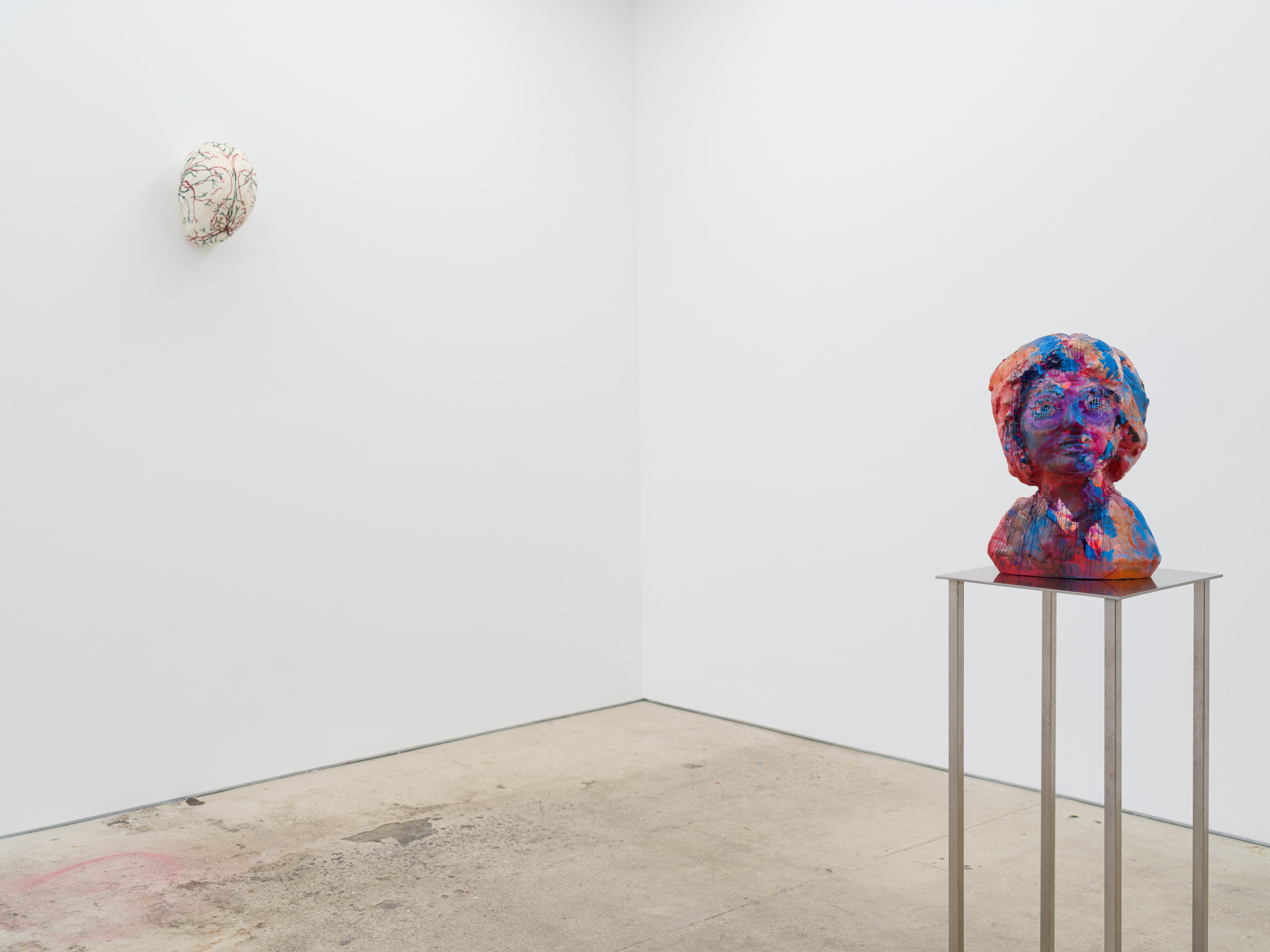
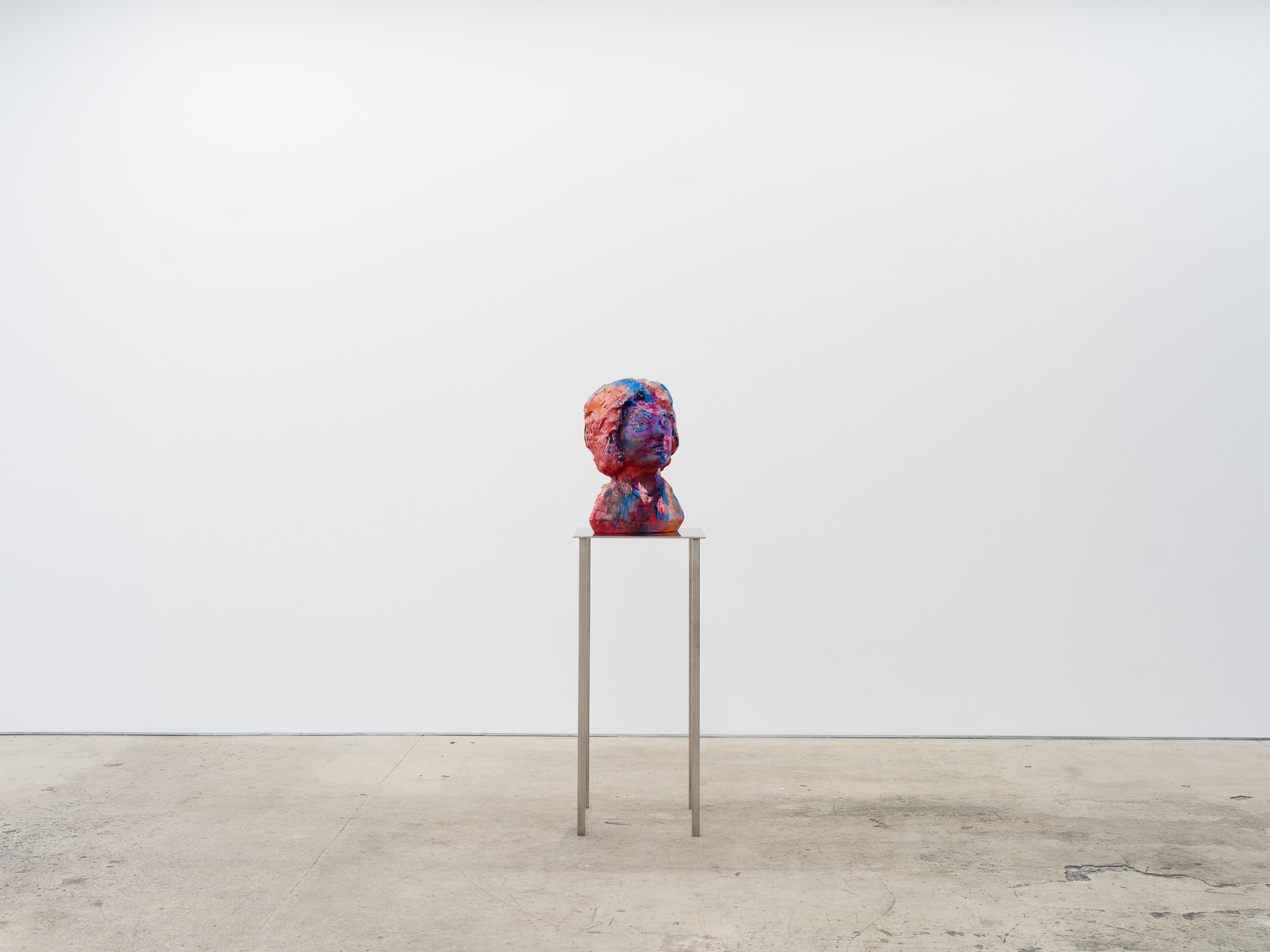
Grandma Purple Blue
2020
Medium-density fibreboard, acrylic and oil paint
52.7 x 36.8 x 37.5 cm
Installation view, PALAS, Sydney, 2024
Photo: Josh Raymond

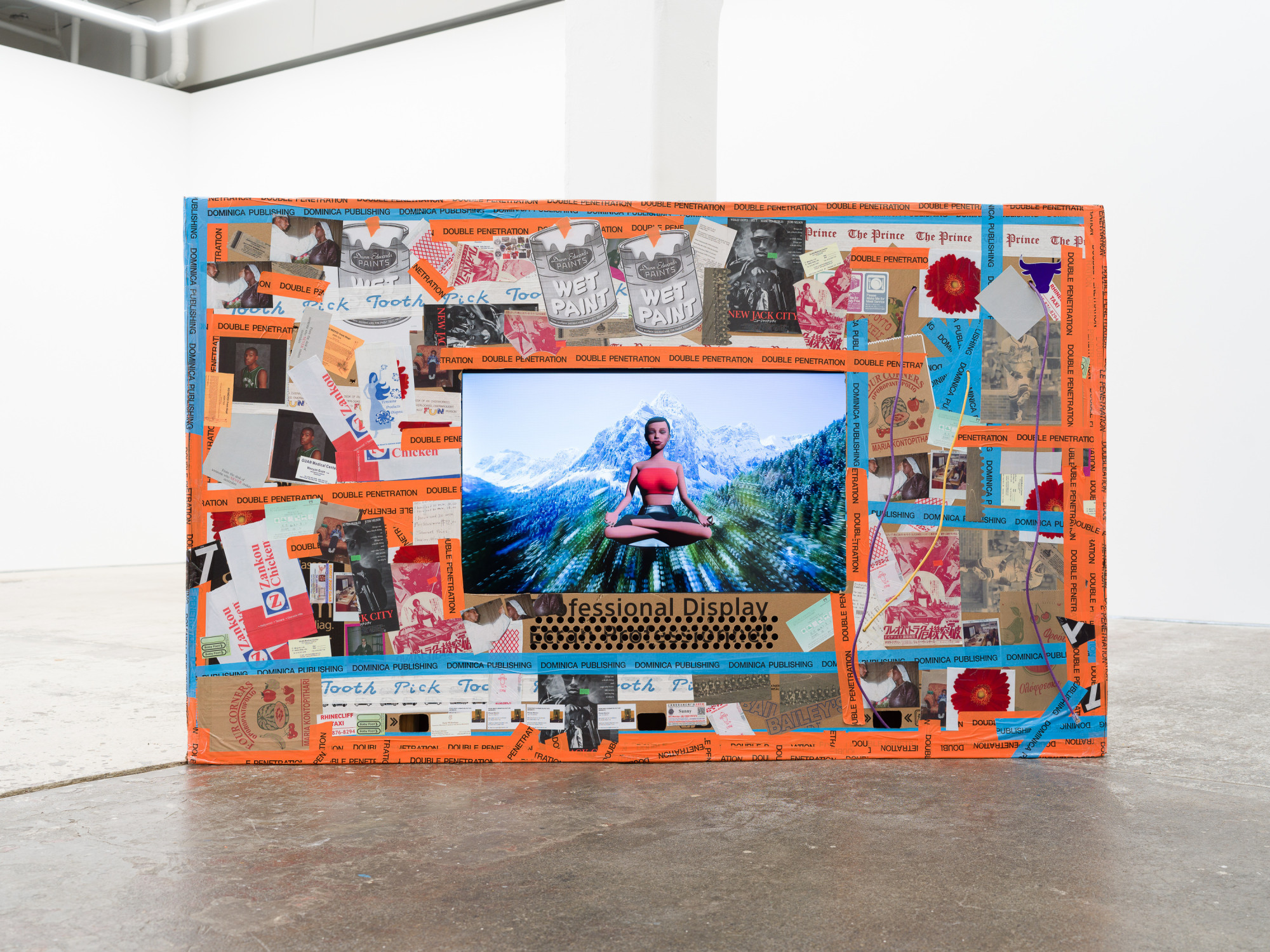
Meditation
2021
(still) digital video, colour, sound
Installation view, PALAS, Sydney, 2024
Photo: Josh Raymond
Courtesy of Sadie Coles HQ, London and Bridget Donahue, NYC
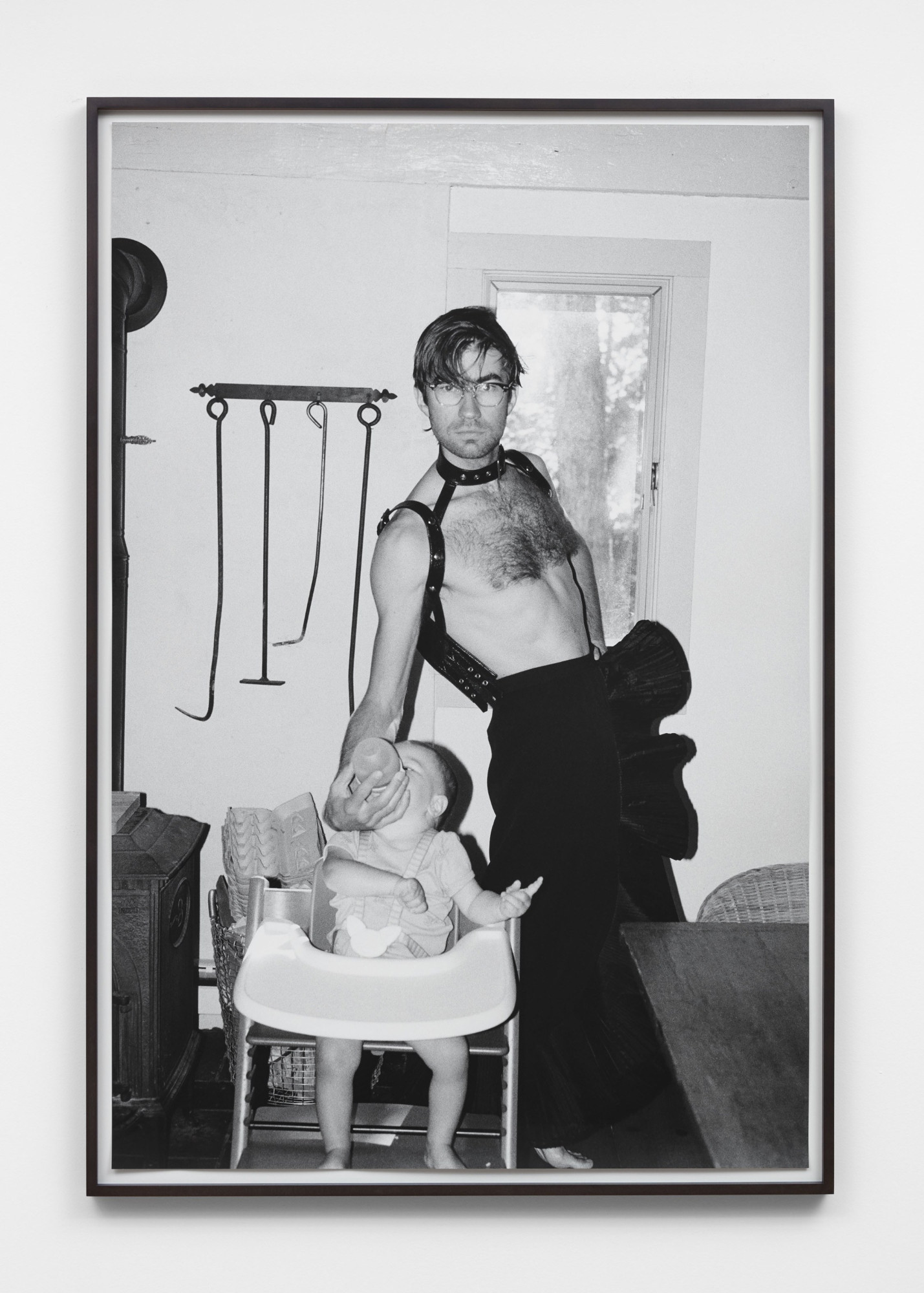
Untitled (Family #1)
2021
Silver gelatin print
152.4 x 101.6 cm
Courtesy of Hannah Hoffman, Los Angeles
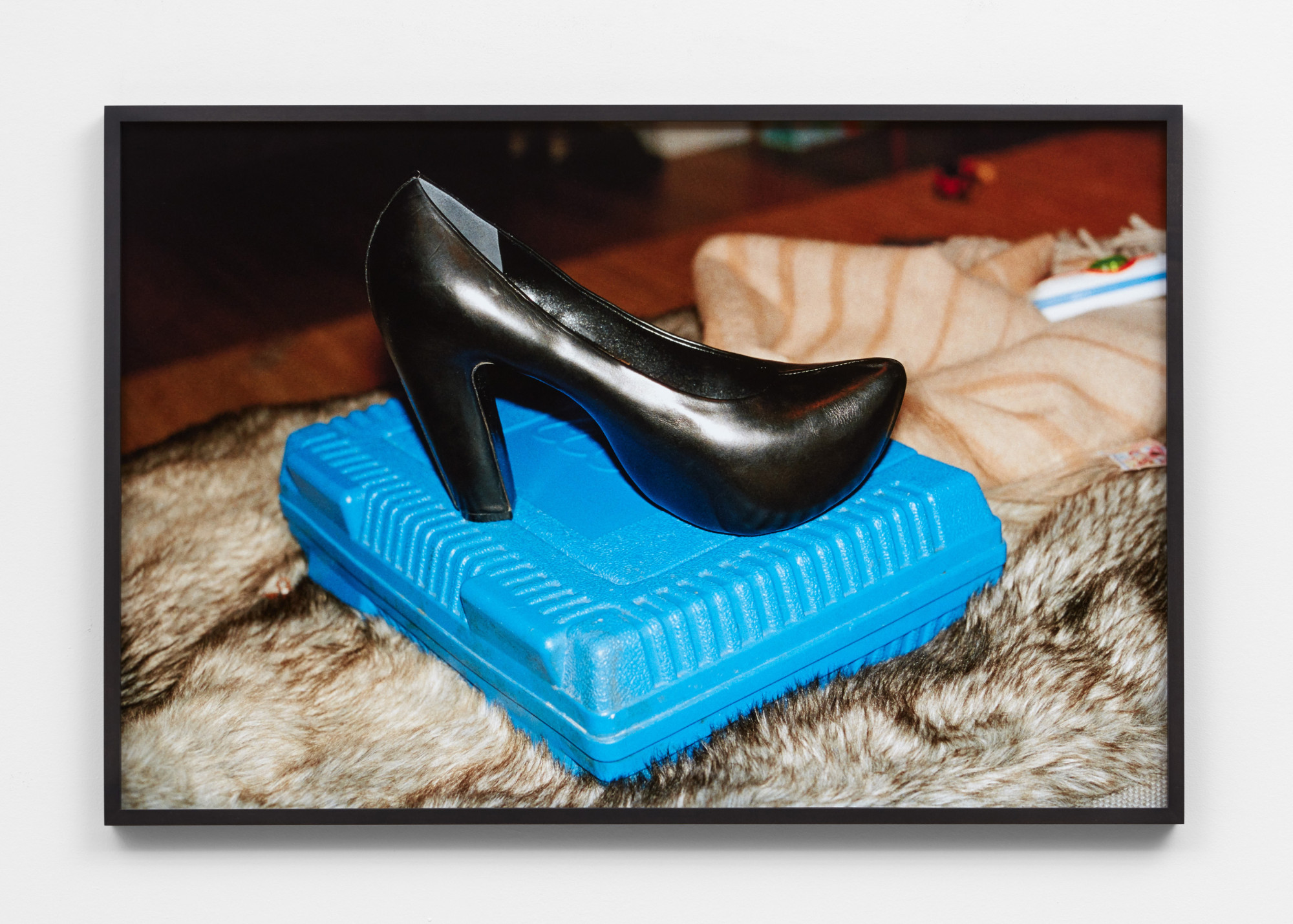
Heel on Legos
2021
Inkjet print
68.6 x 104.1 cm
Courtesy of Hannah Hoffman, Los Angeles
